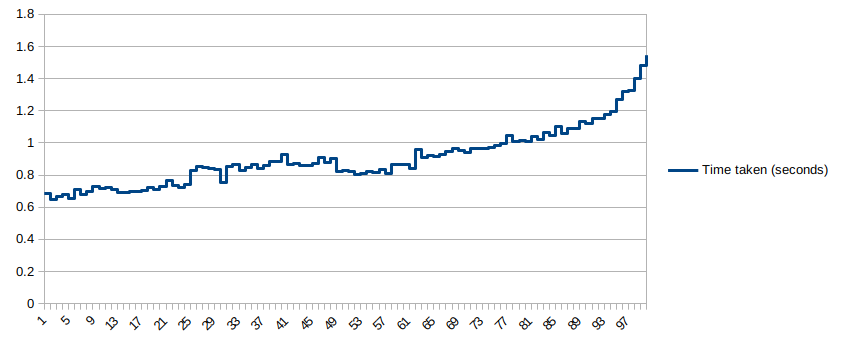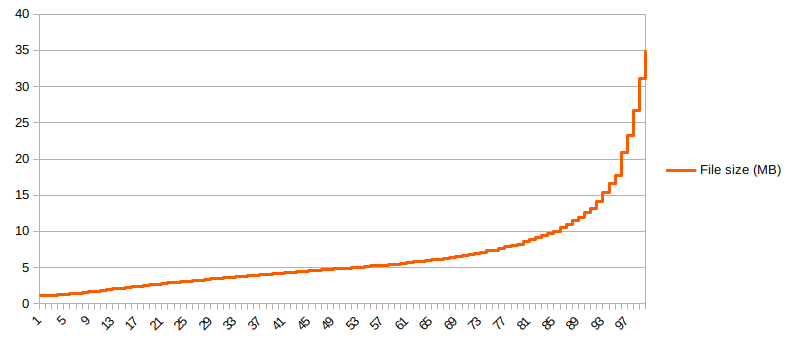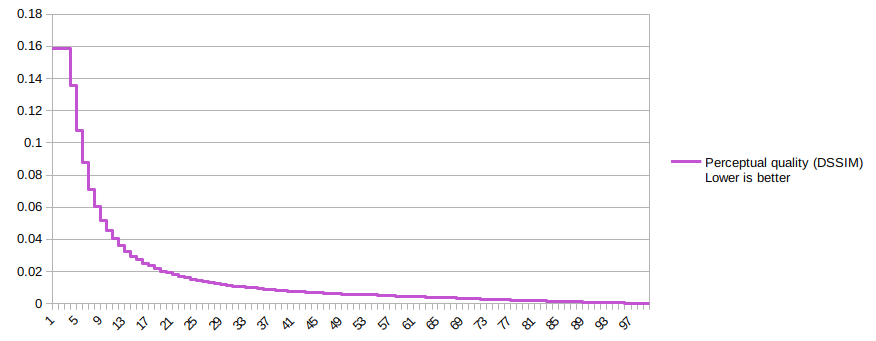Performance comparison for Godot 4.0's Movie Maker mode, depending on the MJPEG quality chosen.
- Godot version: 4.0.alpha14
- OS: Fedora 36
- CPU: Intel Core i7-6700K
- GPU: NVIDIA GeForce GTX 1080
- SSD: Samsung 850 EVO (1 TB)
In this project, the output generated by Godot's Movie Maker mode is a 1-second video at 60 FPS (therefore, with 60 frames). The resolution is 1024×600, and all frames are identical. Since MJPEG does not feature inter-frame compression (only intra-frame compression), the file size is identical regardless of how much motion is present in the recorded video.
A WAV audio channel is also saved by Godot in the AVI file, as this can't be disabled in the engine.
The time taken to save the video (in seconds). A save time of 1 second means that the video could be saved exactly in real-time speed. Lower values than 1 second mean the video was recorded faster than real-time, and higher values than 1 second mean the video was recorded slower than real-time.
Lower is better.
X axis represents the MJPEG quality chosen, with higher quality on the right.
The size of the generated AVI file (in megabytes).
Lower is better.
X axis represents the MJPEG quality chosen, with higher quality on the right.
The perceptual quality of the video's first frame. A value of 0 indicates perfectly lossless output, with higher values being increasingly different from the lossless reference image.
Lower is better.
X axis represents the MJPEG quality chosen, with higher quality on the right.
Copyright © 2022-present Hugo Locurcio and contributors
Unless otherwise specified, files in this repository are licensed under the MIT license. See LICENSE.md for more information.


